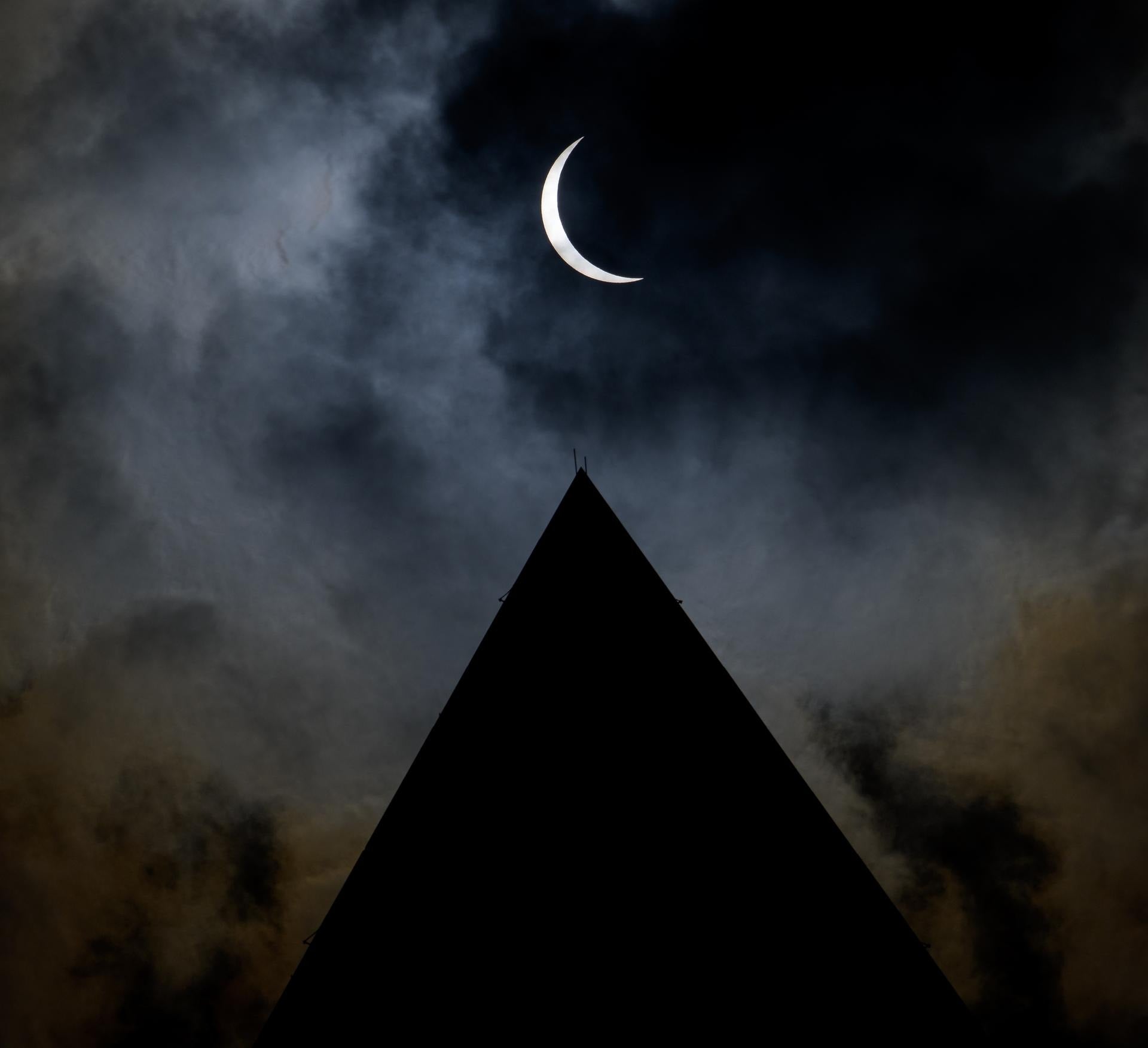
Happy 2024 eclipse! Members of the Astronomy team were staked out from Mexico to Dallas to Indianapolis in the path of totality during the total solar eclipse April 8.
Here’s some of what they saw, and more.
From Senior Editor Mark Zastrow in Torreón, Mexico:
Ever since we arrived in Mexico last Wednesday, Associate Editor Daniela Mata and I had been watching the weather forecast models. Based on historical satellite data, our chosen location of Torreón was supposed to be not just a good place to view the eclipse — it was the single best major city to view the eclipse near the center line, with an average cloud fraction of just 20 percent. But the models were telling a somewhat different story, with patches of clouds forecast to build in the low-pressure trough hanging over the country. Still, these were high-level clouds, compared to the low cloud cover that observers in the continental U.S. would have to contend with.
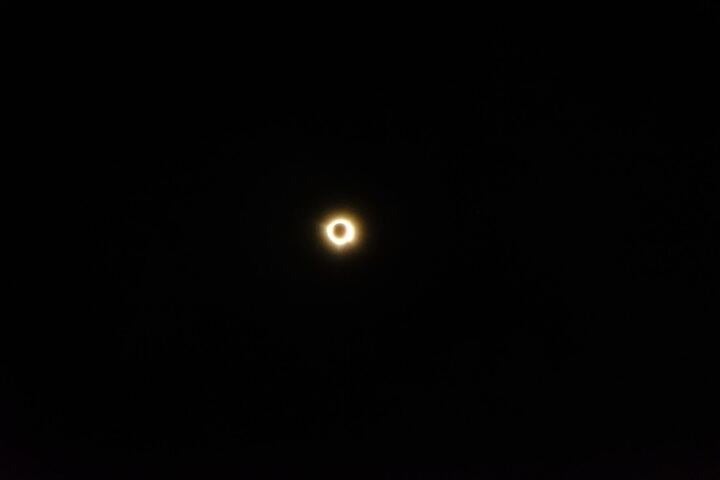
When eclipse day dawned and we arrived at our site — a restaurant on an artificial pond alive with birdsong ringing from all directions — we had a thin cloud layer at 10,000 feet. But as first contact approached, it felt like we were being squeezed, with a broken layer of clouds at 20,000 feet spawning and moving in from the west, and more clouds building to the east.
At 11:30 A.M., about 45 minutes before totality, a breeze came in and a clearing in the broken layer appeared, leaving just bands of wispy clouds, through which the thinning crescent of the Sun was clearly visible. The energy in the crowd — roughly 50 with our Eclipse Traveler tour and perhaps 100 more locals — was palpable.
With clouds all around, the horizon took on a stormy appearance. The umbra cast an imposing shadow that arrived from the west, with a purply hue that would have prompted me to seek cover on a steamy summer afternoon in the Midwest.

Birdsong — which was constant in the morning — largely disappeared as the sky dimmed. With just a few minutes before totality, a lone duck wandered through the crowd, pausing in our midst to groom itself.
And then totality arrived at 12:16 P.M., to cheers and gasps. The corona had a largely even appearance, without strong spikes or streamers. I couldn’t claim with certainty to have see any Baily’s beads with my unaided eye — perhaps due to the cloud layer — but we did see three brilliant prominences. One appeared first on the left limb of the Sun, and then, as the Moon continued sliding from right to left, another pair revealed themselves on the right. In image-stabilized binoculars, the one at 4 o’clock was visibly purple. Jupiter and Venus shone brightly in the darkness, but I could not locate Mars or Saturn amid the clouds, nor (unsurprisingly) any hint of Comet 12/P Pons-Brooks.
After a week of weather anxiety and trepidation, we were thrilled to have a completely successful viewing — and retired to lunch for Coronas of a different type.
— Mark Zastrow, Senior Editor
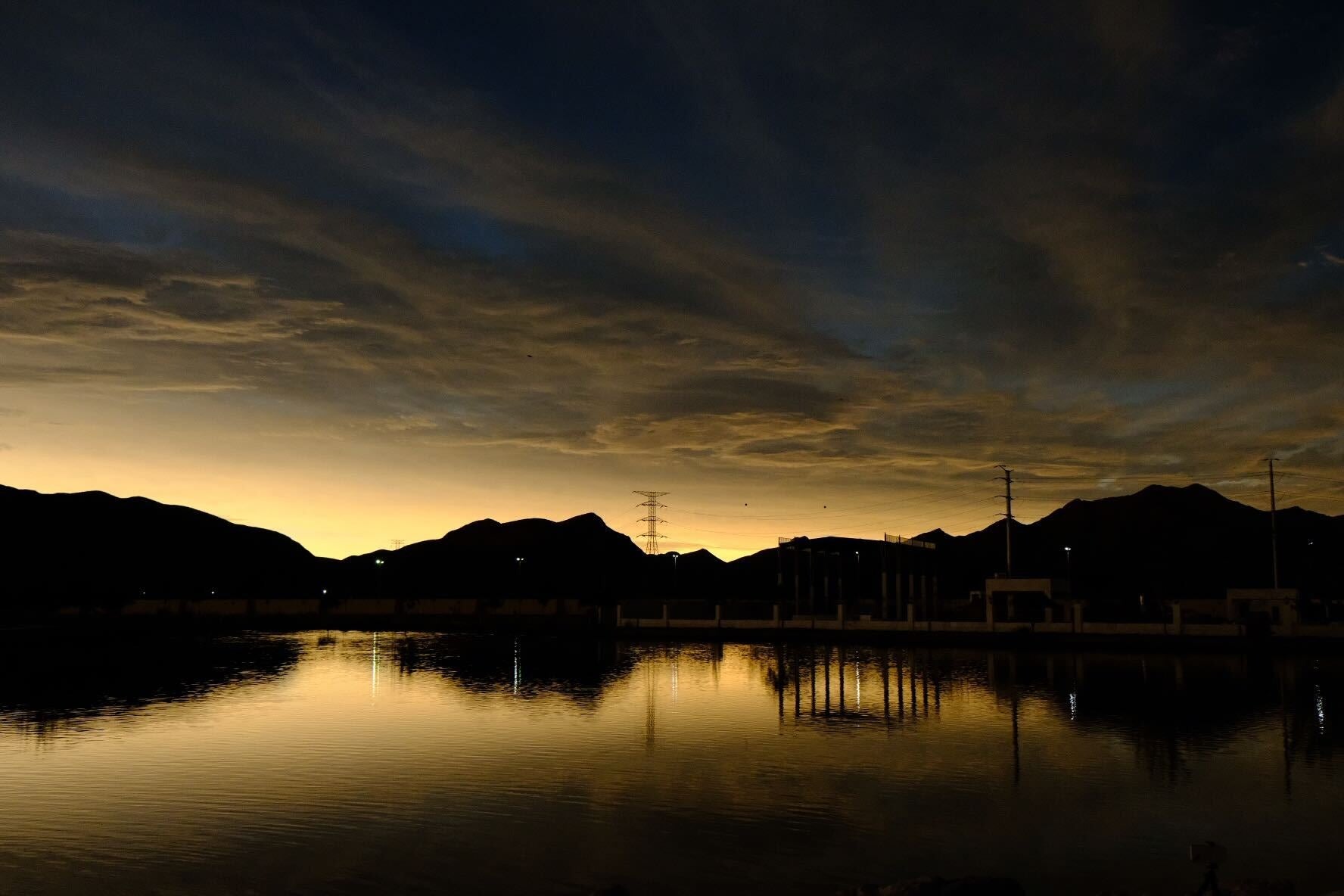
Eclipse watchers in Mexico:

Astronomy’s Samantha Hill captured these images of the partial eclipse in Wisconsin:
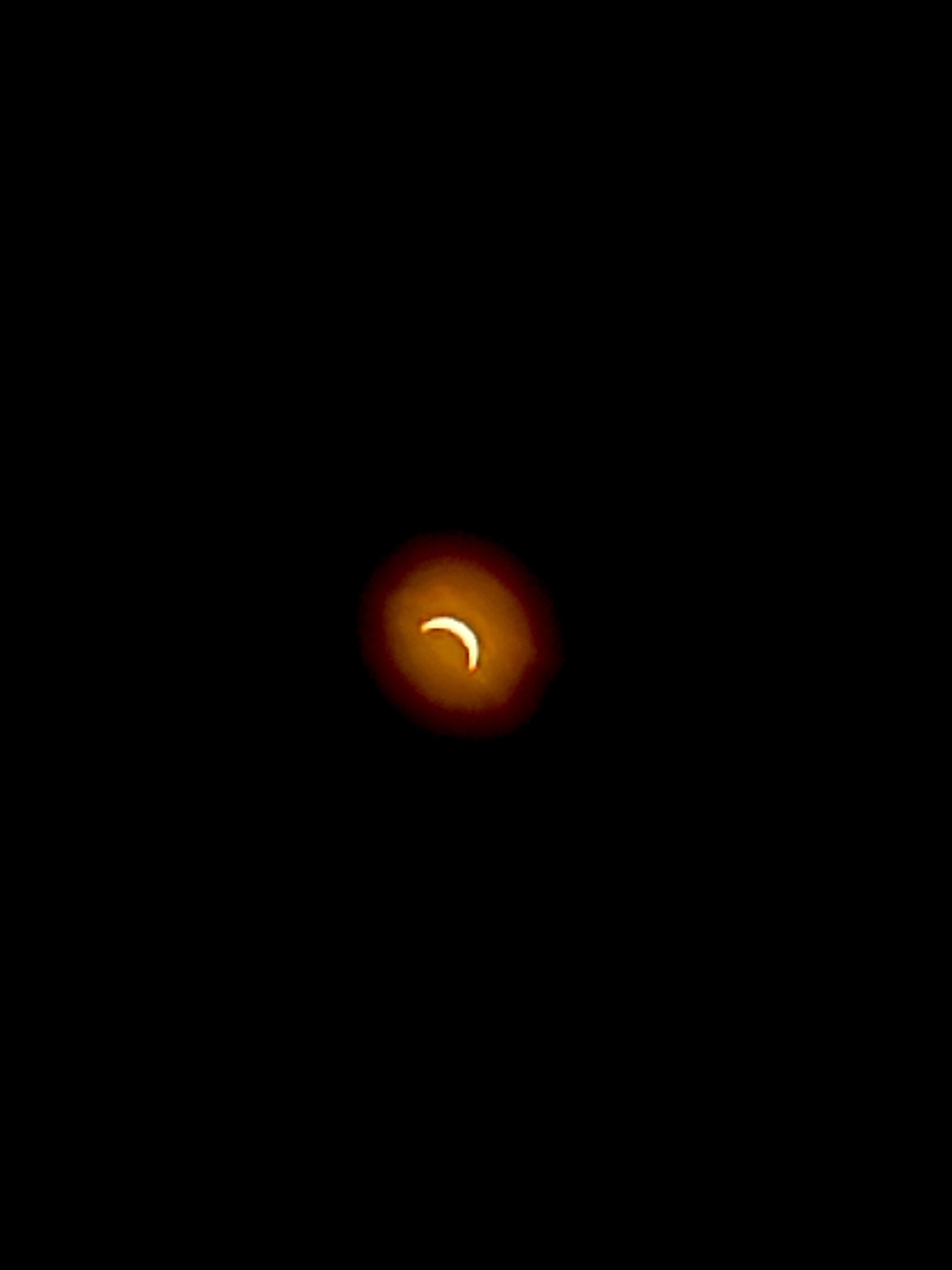
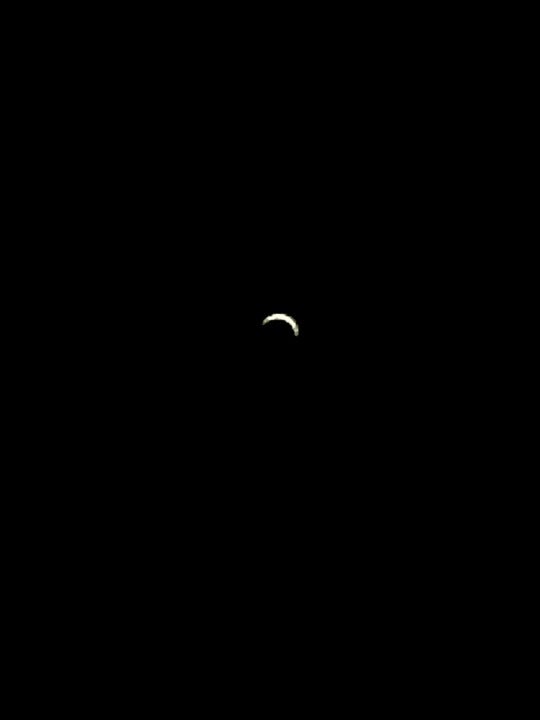
Astronomy’s Elizabeth Gamillo was reporting from Indiana with a group from Purdue University studying sounds during the eclipse and got these photos:
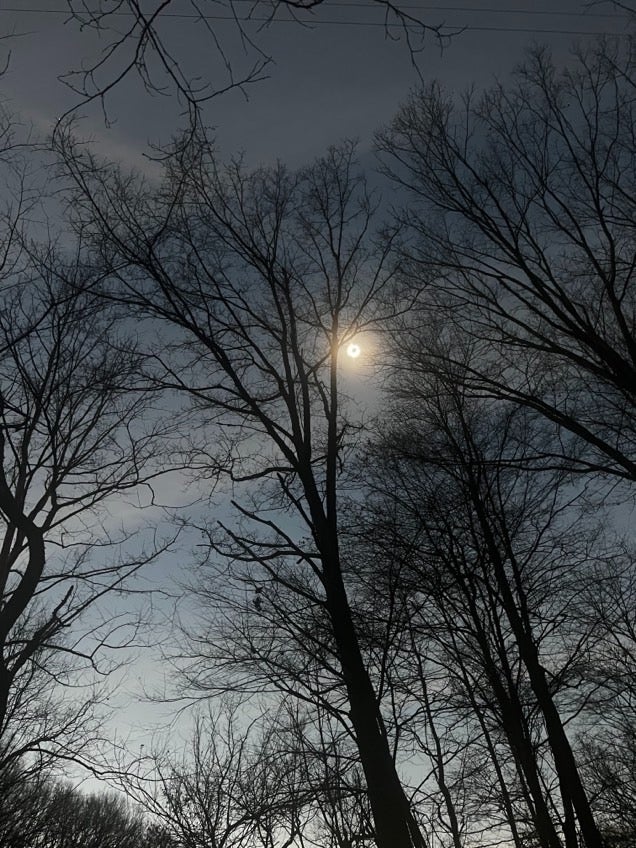
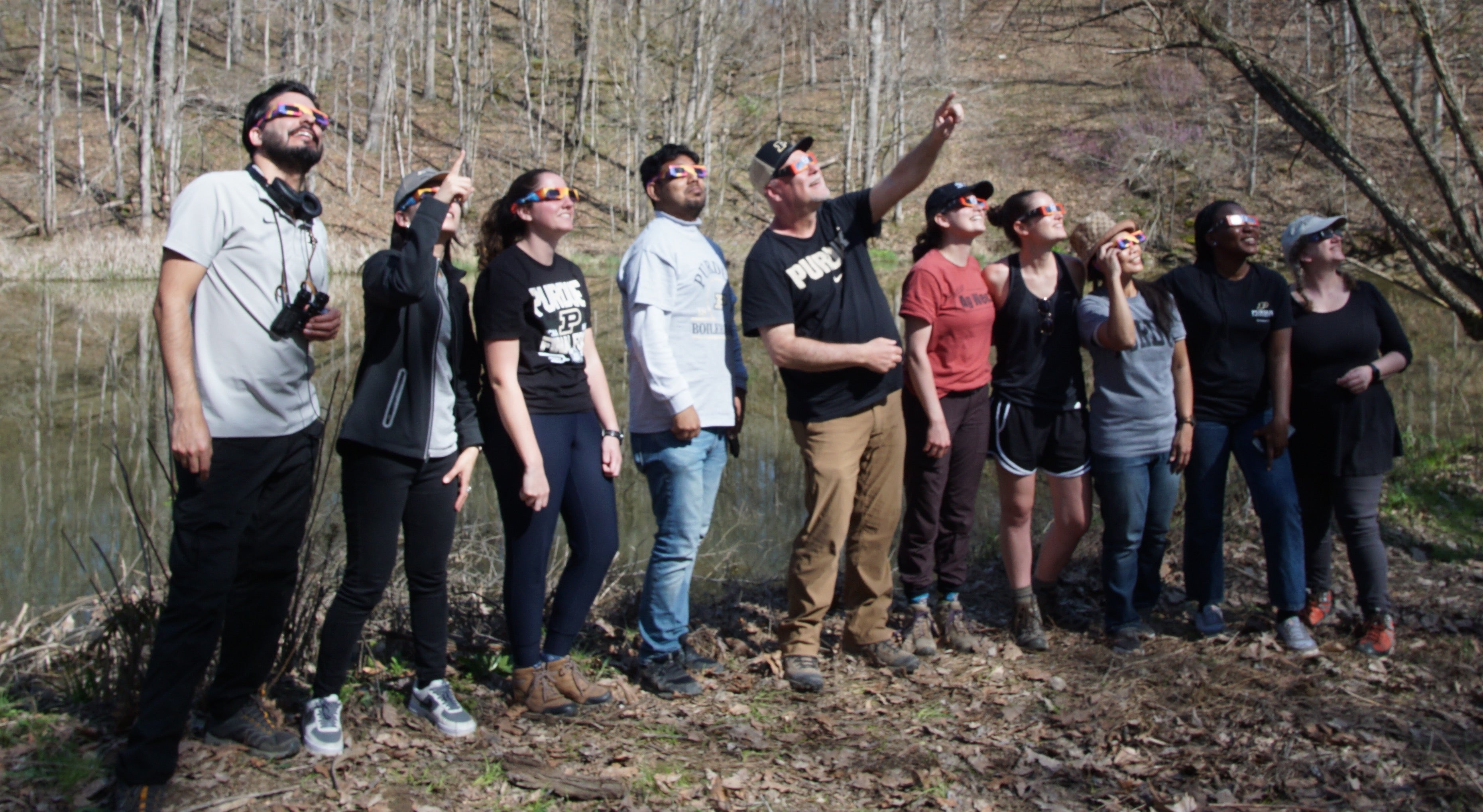
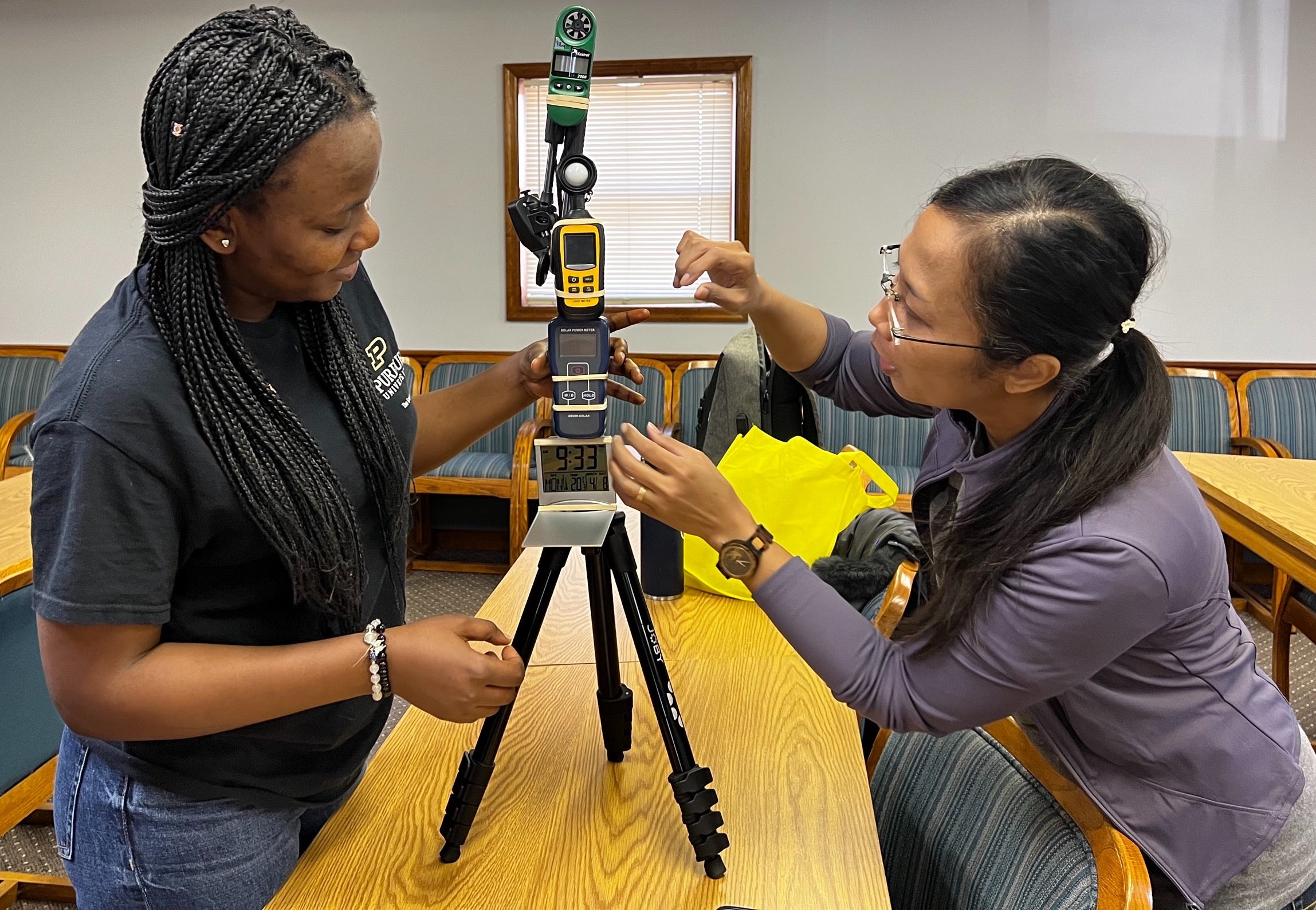
Here are some of NASA’s photos from the eclipse:
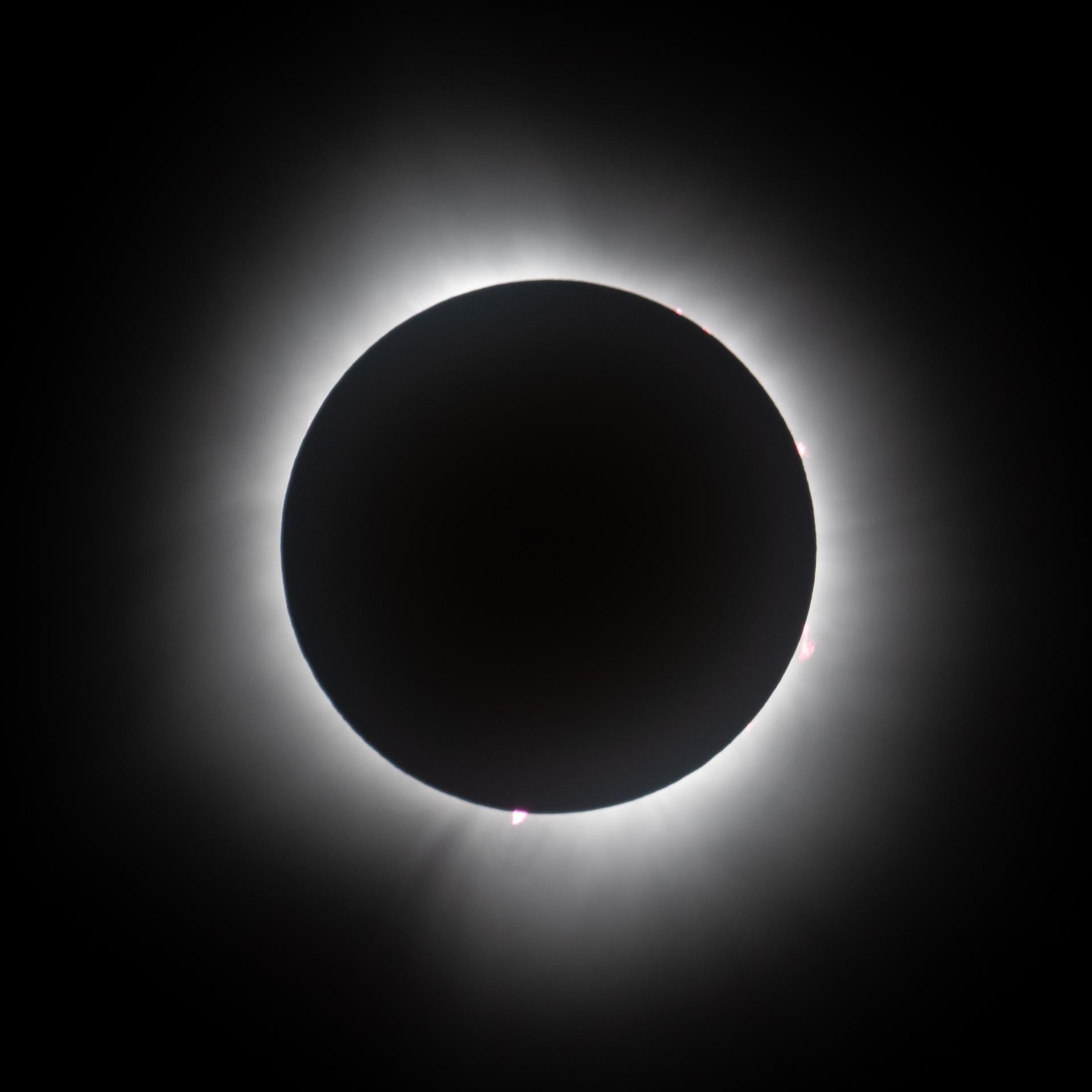
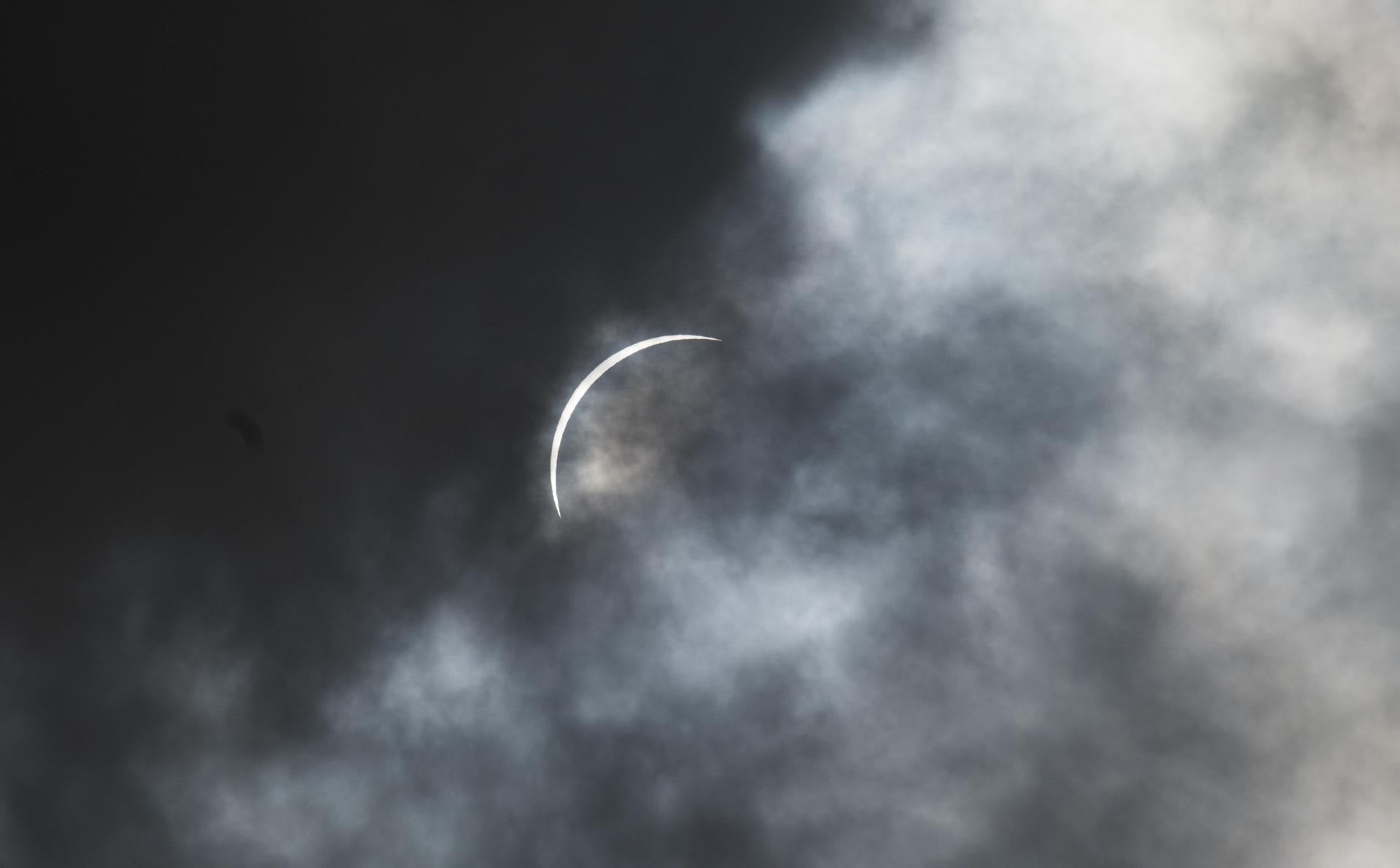
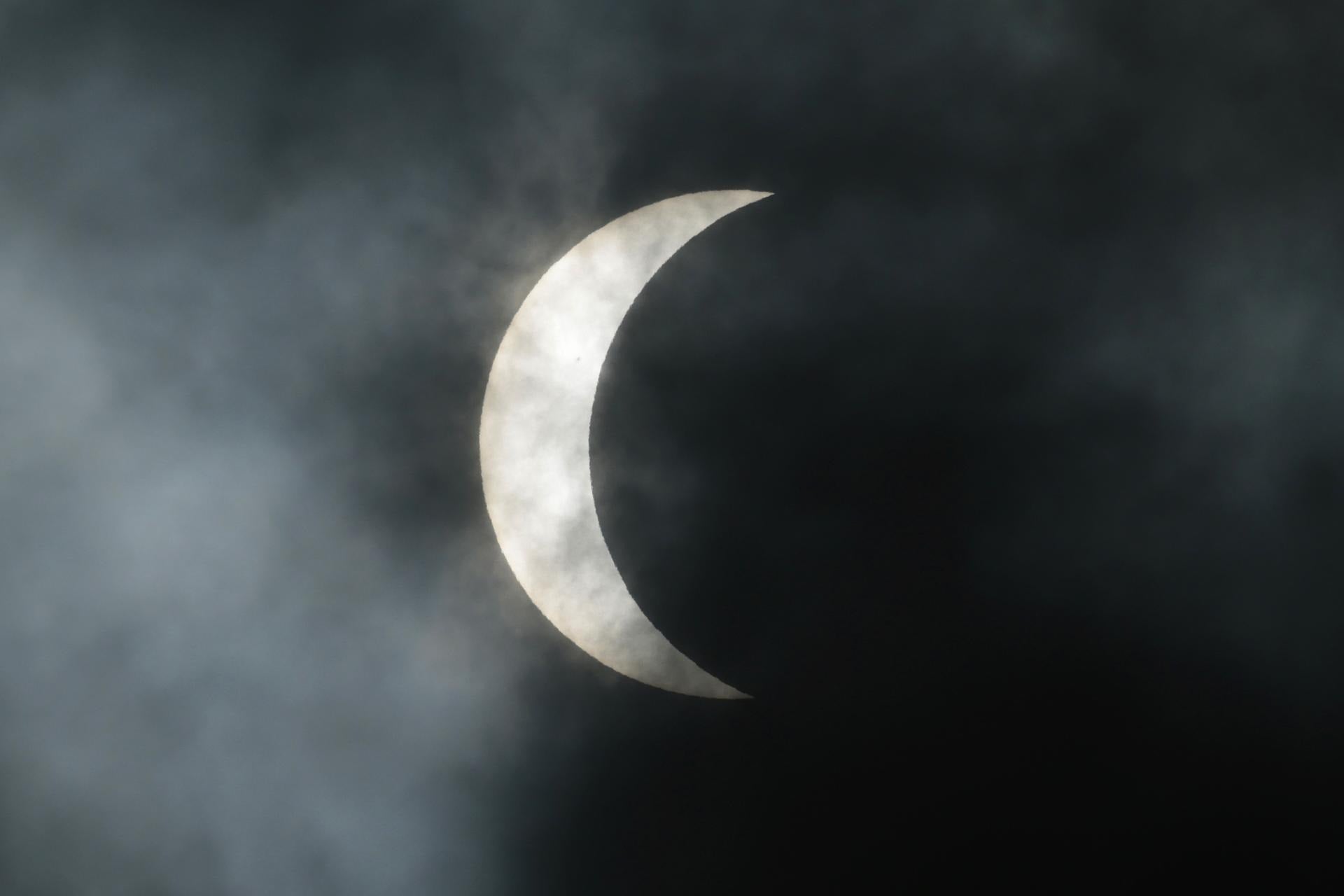
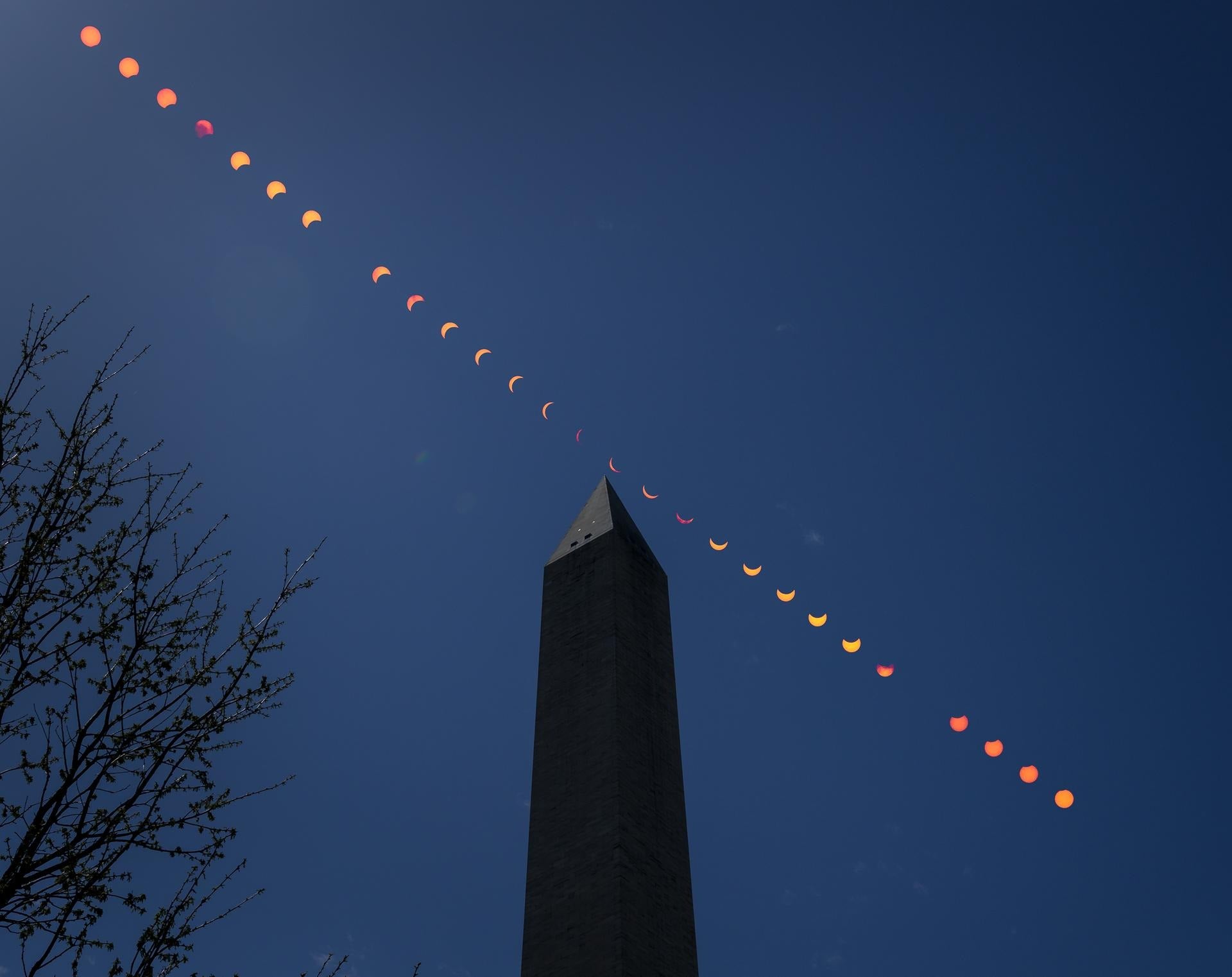
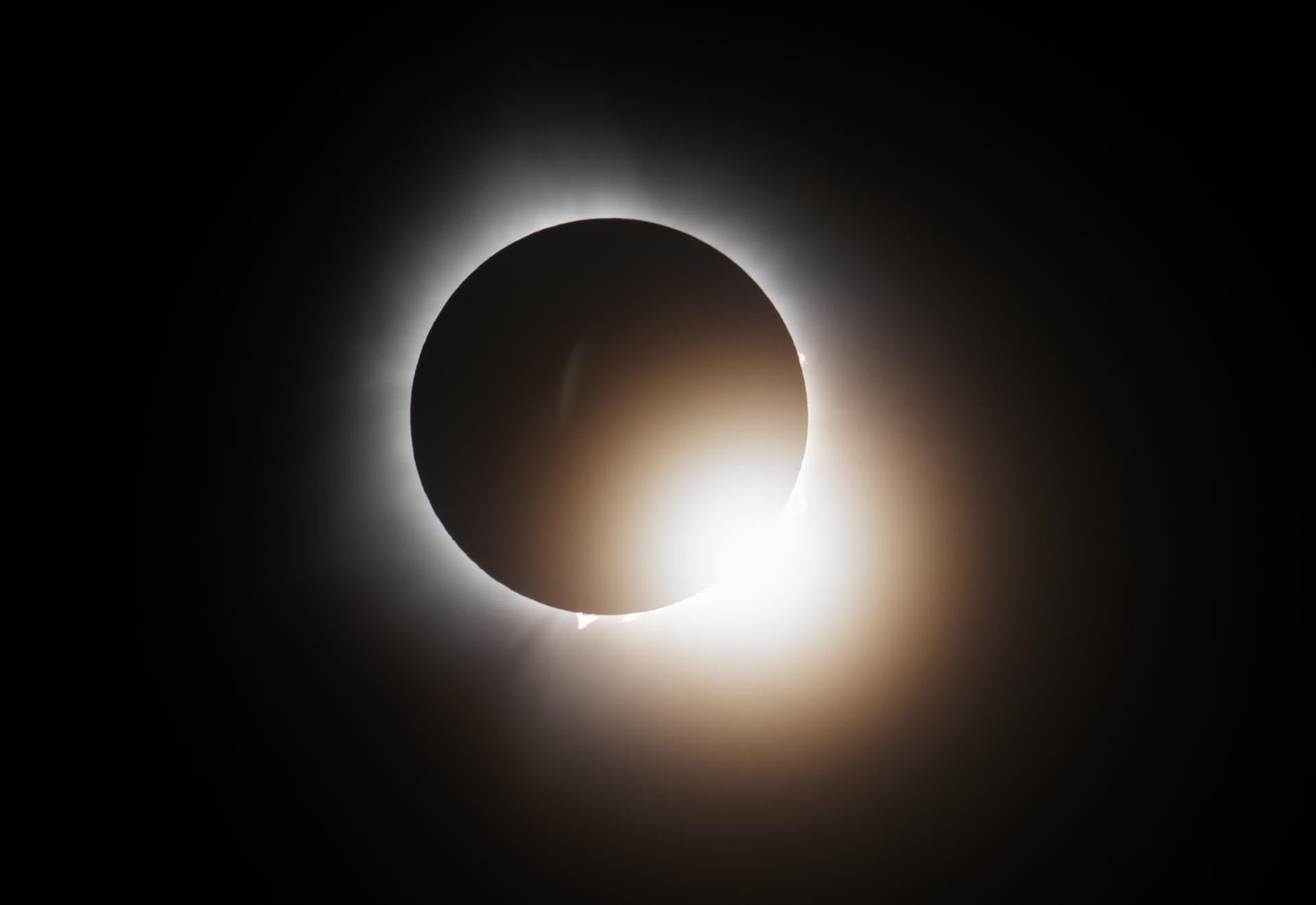
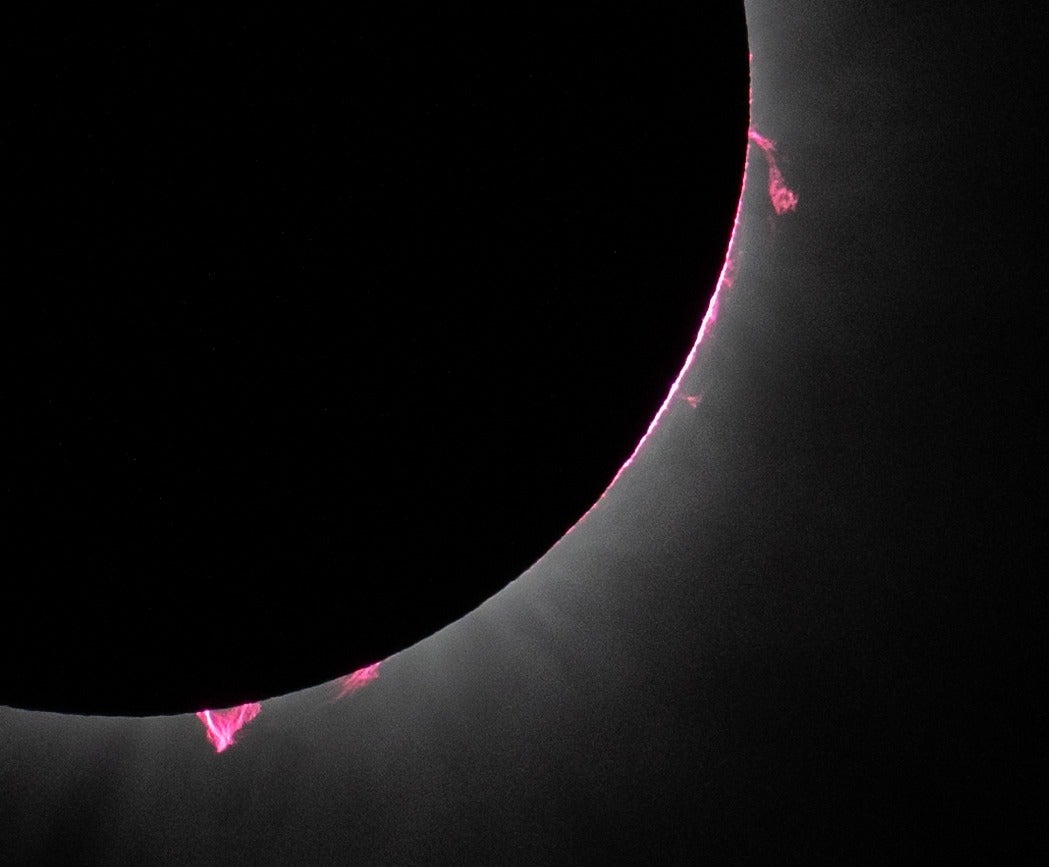
The NASA livestream for the 2024 total solar eclipse
2024 Total Solar Eclipse: Through the Eyes of NASA (the official broadcast):
The NASA telescope eclipse feed:
What you need to know about this solar eclipse
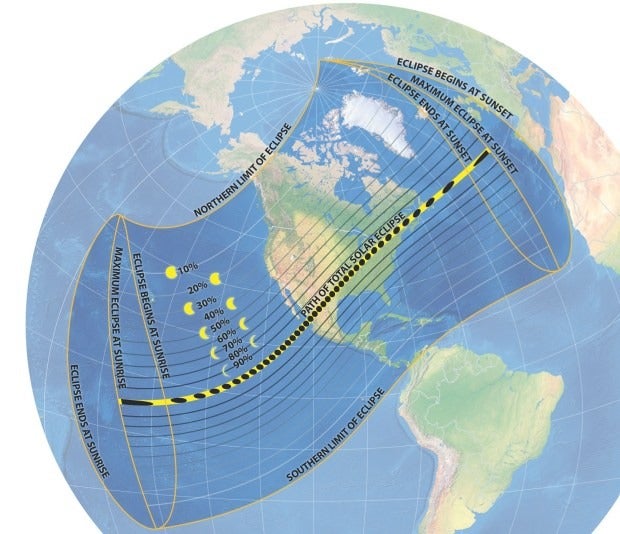
April 8’s eclipse begins when the Moon’s penumbra — the less dark outer region of the Moon’s shadow — first touches Earth at 11:42 a.m. EDT.
The total phase of the eclipse begins at 12:39 p.m. EDT, a bit more than 620 miles (998 km) south of the Republic of Kiribati in the Pacific Ocean. The umbra remains in contact with Earth’s surface for 3 hours, 16 minutes and 45 seconds, until 3:55 p.m. EDT when it vanishes in the North Atlantic Ocean 340 miles (547 km) southwest of Ireland.
This is the first total solar eclipse in the continental United States since Aug. 21, 2017. It crossed the country from Oregon to South Carolina, and millions of people viewed it successfully. Before that one, you have to go back to Feb. 26, 1979.
Astronomy Magazine editor Dave Eicher and contributor Michael Bakich have experienced dozens of eclipses. They broke down the event on a special Astronomy livestream, which you can see below.
Here’s what they covered:
0:04 – Welcome and Introductions
8:03 – What is a solar eclipse and how does it occur?
13:29 – Why is the April 8, 2024, solar eclipse particularly significant?
15:57 – What safety precautions should viewers take while observing a solar eclipse?
19:51 – How can amateur astronomers and enthusiasts best prepare for observing the eclipse?
24:00 – What are some common myths and superstitions about solar eclipses?
26:53 – How do solar eclipses differ from lunar eclipses?
29:35 – What is the path of totality and how can viewers without access to the path of totality still enjoy the eclipse?
32:27 – What are some challenges photographers face when capturing a solar eclipse, and how can they overcome them?
39:51 – What future solar eclipses can we look forward to?
43:36 – Audience Questions – from Reddit User: OlearyBoy | How do I get the shots that will let me post process to my hearts content offline?
45:10 – Audience Question – from Reddit User: CoackKen | Any suggestions about using multiple gear setups?
46:47 – Audience Question – from Reddit User: Whadya Want | Say I’m in the path of totality (in Arkansas for example), but it’s overcast. Will I still notice a difference? My thought is that clouds look different at night than during the day, right? So why not then as well?
52:12 – Audience Question – from Reddit User: jonnyinternet | It seems there is a lot of excitement generally for this one, is there any significance for it specifically or is there just more awareness?









